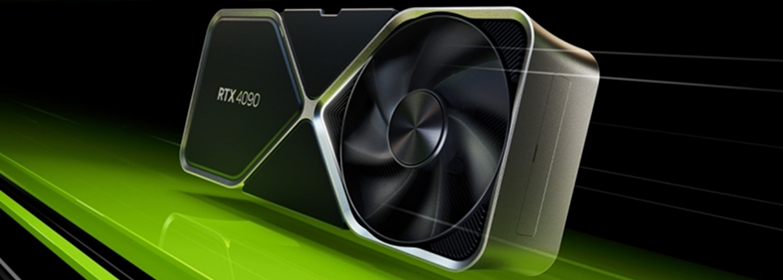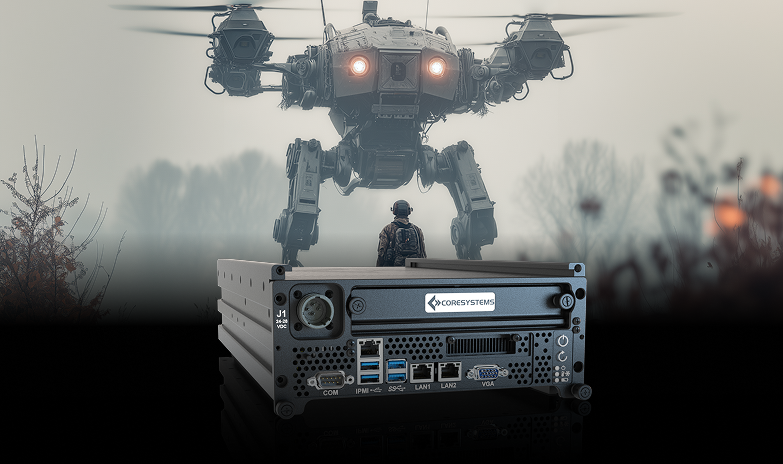Military AI is rapidly transforming defense operations, powered by advancements in rugged AI computing. Rugged edge computers are leading this shift, enabling faster, smarter, and more resilient capabilities at the edge. Now, let’s dive into the key trends driving the future of military AI.

Rugged computing is advancing rapidly, driven by innovations in AI, edge computing, and IoT. Together, these technologies are helping make military operations smarter, faster, and more efficient.
AI is changing military strategies with autonomous systems, predictive analytics, and adaptive cybersecurity. These advancements are making military operations more effective and secure.

Military-grade rugged servers, like the ATMOS with NVIDIA L4 Tensor‑Core GPUs, bring real-time AI inferencing directly to the front lines. These systems eliminate cloud dependency and deliver instant situational awareness and decision support during missions.
The integration of AI with rugged edge servers represents a pivotal advancement in military technology. Built for battle-tested performance, these servers combine high-end CPUs, GPUs, and AI accelerators to excel in harsh, rugged environments. Future applications include enhanced battlefield intelligence, autonomous vehicle operations, and predictive maintenance of military equipment. Military teams are using AI-powered simulations to revolutionize training exercises and sharpen mission planning.

Edge-connected devices are reshaping the modern battlefield. From wearables on soldiers to drones and ground sensors, these technologies form a real-time data-sharing network known as the Internet of Military Things (IoMT). This interconnected system enables faster threat detection, autonomous decision-making, and enhanced coordination—even in communication-limited environments—making military operations more adaptive, intelligent, and resilient.

AI-enabled robots and drones are increasingly handling high-risk tasks. Military forces are using autonomous systems for tasks like reconnaissance and bomb disposal, keeping soldiers out of the most dangerous roles. Edge-embedded computing empowers these machines to adapt and act independently.

Rugged edge computing is entering a new phase with the integration of neuromorphic processors and advanced optical interconnects. These technologies, initially backed by DARPA and now developed by organizations like SRI International, are moving from research into real-world deployment.
Optical interconnects can transfer data between chips up to 100 times faster than traditional copper wiring, while significantly reducing power consumption. When combined with neuromorphic chips that simulate the brain’s neural structure, rugged systems can now process complex AI workloads with ultra-low latency and high efficiency.
As a result, real-time AI execution is now possible directly at the tactical edge. Even in contested environments with limited infrastructure, rugged edge systems continue to operate reliably. This leap forward is not just an improvement in speed or efficiency—it redefines what is achievable in mission-critical military operations.
Cyber warfare is a silent, persistent threat, often invisible to the public but critical to modern conflict. Military AI systems are no longer just data processors; they’re frontline defenders against digital attacks. As threats evolve, rugged computing platforms must not only resist intrusion but anticipate it.

Future-forward systems are increasingly integrating AI-powered cybersecurity that not only monitors for anomalies continuously but also detects breaches in real time. When threats are identified, the system can autonomously respond by isolating compromised nodes, rerouting functions, or self-healing critical processes. As a result, these capabilities are becoming essential in disconnected, contested, or signal-jammed environments where remote intervention is either limited or entirely unavailable.
Looking ahead, we see increased adoption of AI and rugged computing in the military, shaped by regulatory guidelines and industry forecasts. These technologies promise to push the boundaries of defense capabilities.
Core Systems is leading the charge in rugged computing and AI. Every day we create new systems designed to future-proof military operations, enhance efficiency, and ensure superiority in defense capabilities.